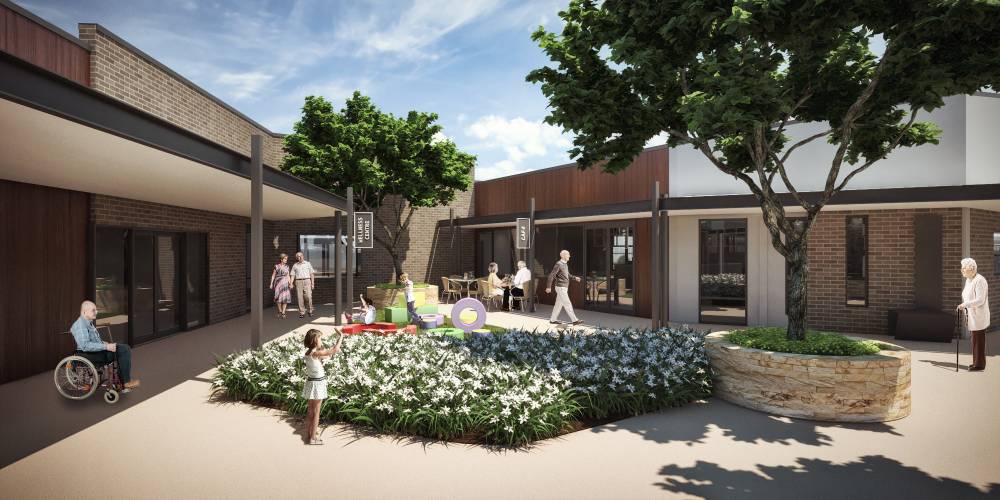
The first sod was turned this week on the Korongee dementia village in Glenorchy, Tasmania, marking the start of an innovative new approach in Australia to caring for those who are living with dementia.
Korongee village reflects the current global drive to improve the quality of life of people living with dementia.
The village is designed so as to encourage residents to maintain a sense of themselves, to have control over the decisions they make, and to feel they have a place where they belong and are part of a safe and secure home and community.
The village is the first of its kind in Australia, and is the product of a partnership between HESTA, the not-for-profit aged care provider Glenview, the Commonwealth Government and Social Ventures Australia.
The design of Korongee is based on a typical Tasmanian cul-de-sac, and is intended to encourage people living with dementia to continue to take part in normal, everyday activities.
The village will contain 12 eight-bedroom houses, and a commercial centre, where there is a café, supermarket, beauty salon and gardens.
Residents will be able to walk around the village independently, and participate in the everyday life activities that many of us take for granted, such as going down to the local café for a coffee, or walking to the supermarket to buy groceries for dinner.
Being able to participate in these simple, common activities provides the opportunity for those living with dementia to make decisions for themselves, and this autonomy can help give them a sense of control over their own lives.
Glenview CEO Lucy O’Flaherty said Korongee draws on innovative examples from around the world that are changing the way care is provided for people living with dementia who are no longer able to live in their own homes.
“Residents at Korongee will live in small houses with others whose values they share. All the homes are being built with dementia design principles throughout, so a sense of everyday normality is much easier to maintain,” Ms O’Flaherty said.
There are more than 430,000 Australians currently living with dementia, and unless a cure is found, that number is expected to rise to more than one million by 2058.
Dementia is the second leading cause of death for Australians and is the single greatest cause of disability for Australians aged 65 years and older.
HESTA CEO Debby Blakey said the village is a milestone for aged and dementia care in Australia, and HESTA is “incredibly proud” to be supporting this innovative model.
“The demand for dementia care across the nation is outstripping supply,” she said.
“Korongee will help address the big social challenge of dementia, as well as create jobs and opportunities for our members who work in health and community services.”
Ms Blakey said the investors in the project hope to set an example for other large investors to look for opportunities that not only deliver a return, but also help tackle the big social challenges of our time.
“Even relatively small allocations to impact investing from funds in Australia’s $2.7 trillion superannuation industry can make a huge difference,” she said.
The construction of Korongee is expected to be completed in late 2019.